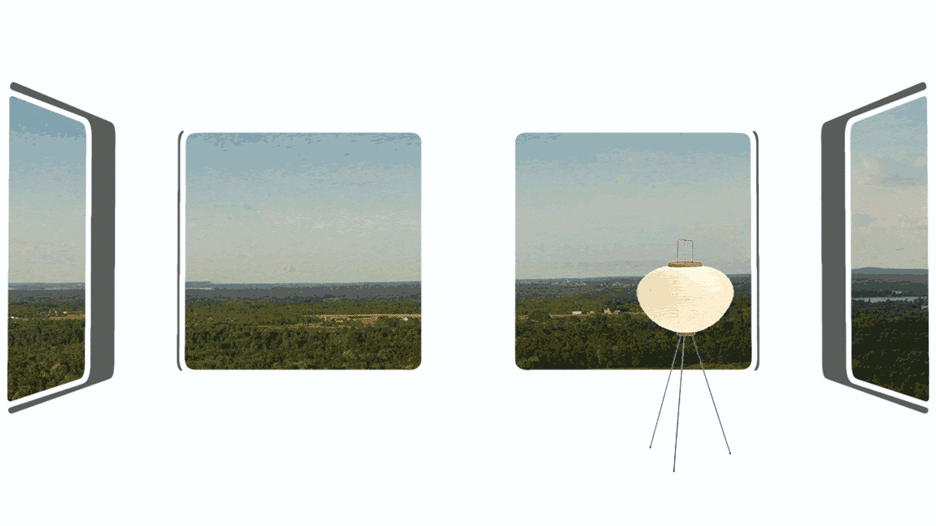
Supertall skyscraper hangs from orbiting asteroid in Clouds Architecture Office concept
In a bid to get around terrestrial height restrictions, Clouds Architecture Office has proposed suspending the world's tallest skyscraper from an asteroid, leaving residents to parachute to earth.

New York-based Clouds Architecture Office drew up plans for Analemma Tower to "overturn the established skyscraper typology" by building not up from the ground but down from the sky by affixing the foundations to an orbiting asteroid.
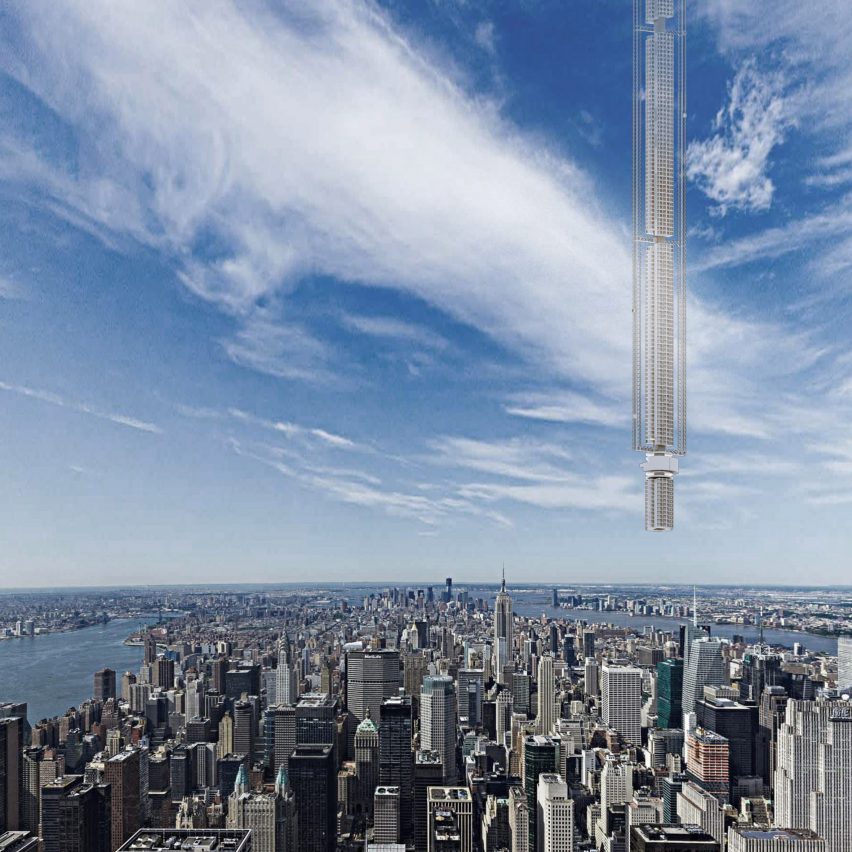
"Harnessing the power of planetary design thinking, it taps into the desire for extreme height, seclusion and constant mobility," said the architects, who have previously drawn up proposals for space transportation and a 3D-printed ice house on Mars.
"If the recent boom in residential towers proves that sales price per square foot rises with floor elevation, then Analemma Tower will command record prices, justifying its high cost of construction."
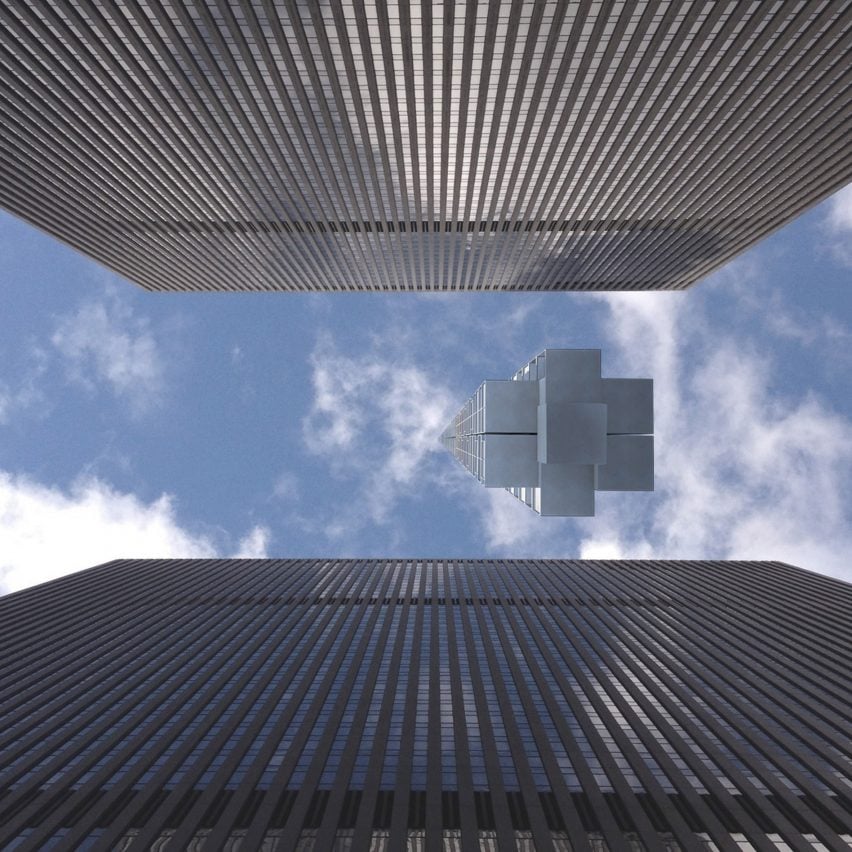
The architects propose building the tower over Dubai, a city at the forefront of supertall construction, and where property is almost 15 times cheaper per square foot than New York, according to their workings out.
Prefabricated modules would be hoisted up from earth and plugged into the building's extendable core, which would be tethered by cables to the asteroid.
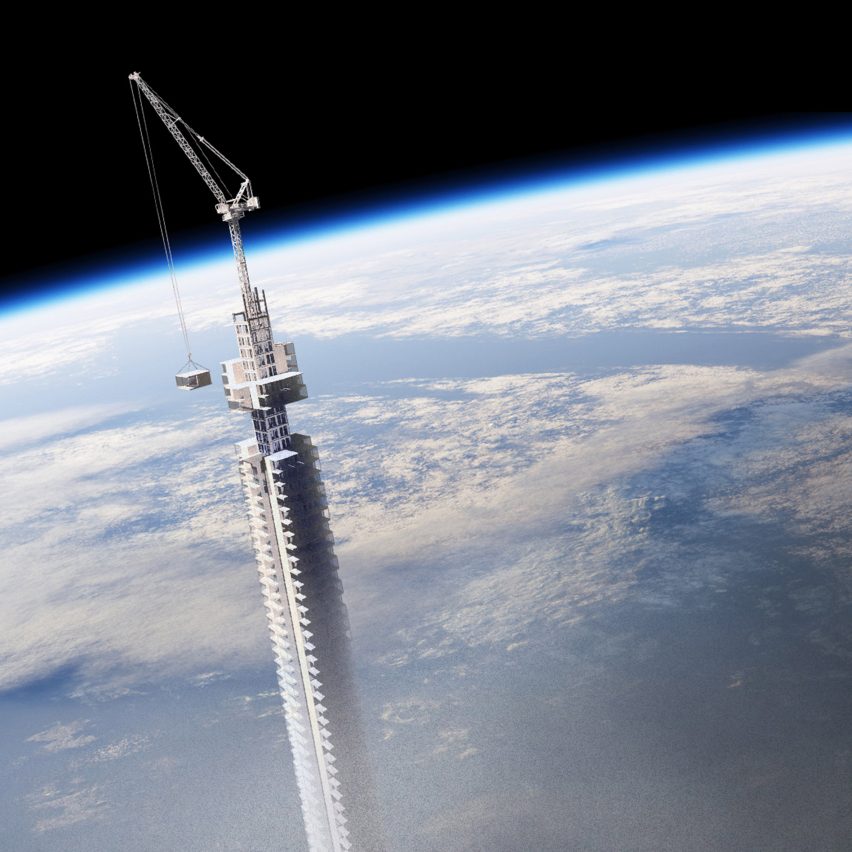
"Since this new tower typology is suspended in the air, it can be constructed anywhere in the world and transported to its final location," said the architects.
"Manipulating asteroids is no longer relegated to science fiction," they said, explaining how a 2015 mission by the European Space Agency had proved the ability to land on a spinning comet.
"NASA has scheduled an asteroid retrieval mission for 2021 which aims to prove the feasibility of capturing and relocating an asteroid."
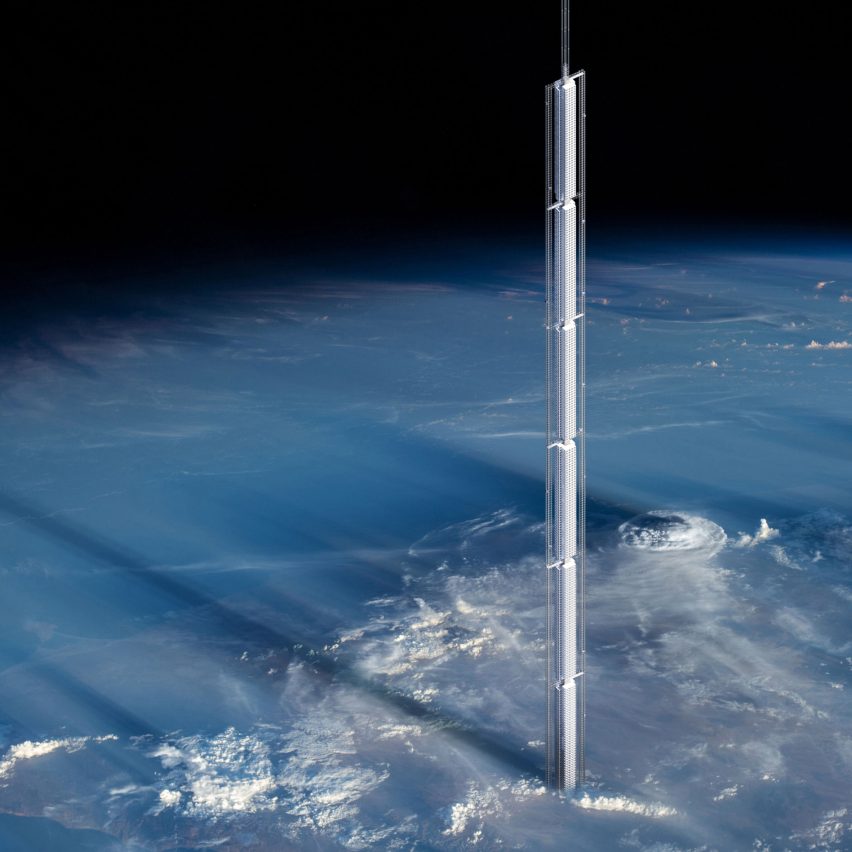
The completed tower would follow a figure-of-eight path between the northern and southern hemispheres each day.
The lowest and slowest part of the orbit would see the building pass over midtown Manhattan. Where the topography is at its highest the inhabitants would be able to disembark via parachute.

"Through the course of history humanity has been able to affect the environment on increasing scales," said the studio. "Today our activity is being registered on a global scale."
"So why not apply design thinking on a planetary scale? Analemma Tower is an example of a mixed-use building that incorporates planetary design strategies, yielding the world's tallest building ever."
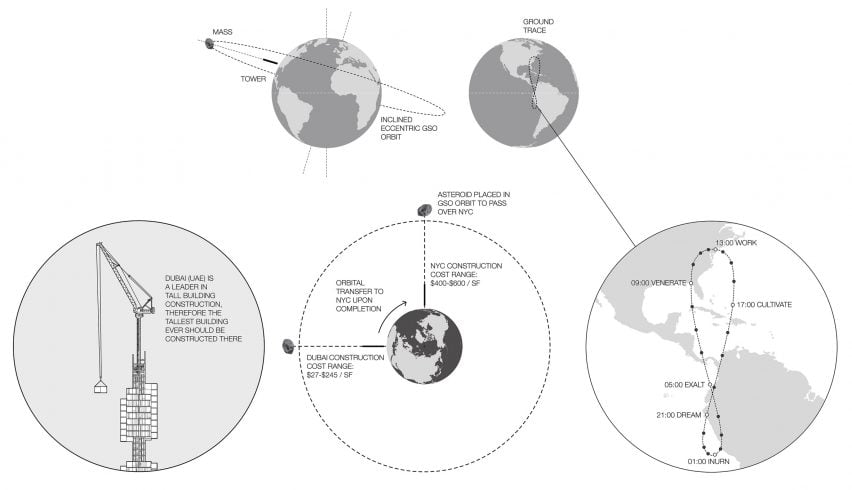
The tower would be powered by solar panels mounted on the uppermost levels, where, located above the atmosphere, they would have constant exposure to sunlight. Water would be collected from the condensation of clouds and from rainwater.
The tower is split into sections, with each dedicated to different activities. Business takes place across the lowest hanging floors of the block, while residences are located two-thirds of the way up, with worship and funerary activities taking place in the uppermost section.

The size and shape of windows changes along the length of the tower, adapting to the different exertions of the atmosphere as well as temperature.
Windows towards the top of the tower, where it extends beyond the troposphere to give residents an extra 40 minutes of sunlight each day, would have rounded elevations to cope with the increased pressure.
Analemma Tower is the latest project investigating space exploration from Clouds Architecture Office, which is run by Masayuki Sono and Ostap Rudakevych.
The office previously has created concepts for a space elevator and a proposal to harness the power of comets for interplanetary transportation, and in 2015 won a NASA competition to design a 3D-printed house on Mars.
Project credits:
Architect: Clouds Architecture Office
Project designer: Ostap Rudakevych